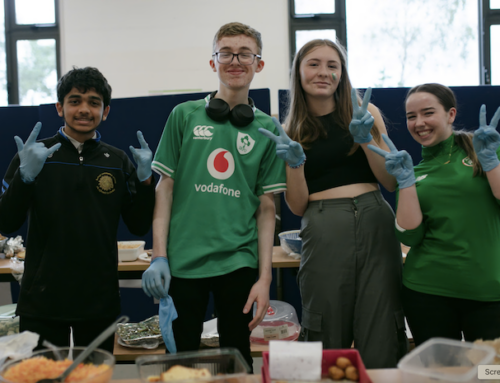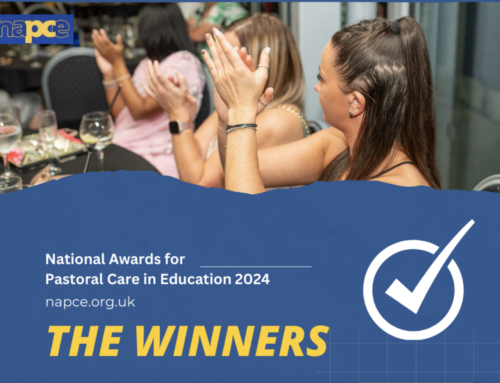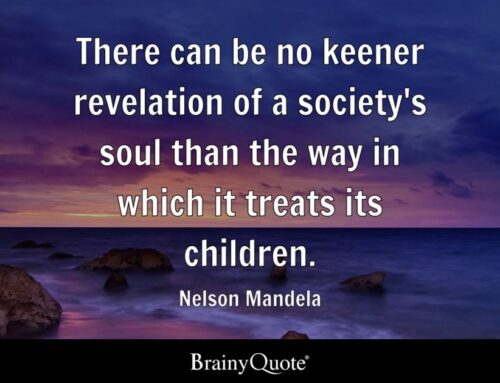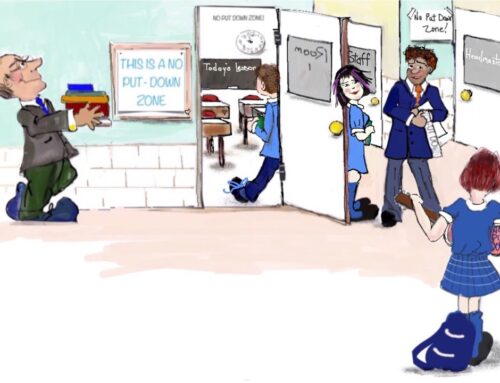The media have reported that Mohammed Emwazi was a good student who had some problems with being bullied at his London secondary school by a group of boys who taunted him as he left the premises. He was said to be smaller and weaker than most and had low self-esteem. At some point he had help with anger management. According to his school principal, Jo Shuter, Emwazi became a ‘hard-working aspirational young man’ who went on to the university of his choice. He was then said to be “The best employee we ever had’ working as an IT salesman in Kuwait.
In terms of current educational priorities he was a success – working hard, being compliant and well behaved, passing tests and getting ‘a good job’.
Emwazi is now known as ‘Jihadi John’ and is one of the most notorious and ruthless killers in the world, hitting all the headlines for his callous beheadings of behalf of Islamic State. And in recent days we have seen young girls going to Syria to join the movement there. Whatever school was offering these students, it clearly wasn’t enough. The media conversation has focused almost entirely on the radicalisation of young people. The cliché ‘shutting the stable door after the horse has bolted’ seems apposite.
In March 2009 the New Scientist reported on a study (Wike & Fraser, 2009) with the headline “Teen killers don’t come from schools that foster a sense of belonging”.
I cannot help but see similarities between this situation and the incidents of multiple killings in US schools since 1999. These events took place in schools where some students were seen as stars and others rejected as losers, even though they might be academically able. It was the ‘losers’ and the marginalised that perpetrated these atrocities, partly in revenge and partly to make themselves feel important at last. The killers also showed no empathy for those they gunned down and had no apparent concern for their own safety or future.
A sense of connection to school means you feel that it matters you are there, you are valued for who you are, not just how you perform, the learning environment is both positive and safe and you perceive your learning as meaningful. Increasingly educational policy-makers are giving the message that academic outcomes are all that really count. It is not about who you are and more importantly, who you are becoming, but how you perform as measured by various tests that matters. This is how schools are increasingly judged and compared.
Learning to Be and Learning to Live Together are two of the four pillars of education for the 21st Century identified by UNESCO in 1997. The other two are learning to know and learning to do. An overwhelming focus in schools on academic content means there is no time left for learning about relationships, exploring values or developing a sense of shared humanity with others. In the UK the Social and Emotional Aspects of Learning (SEAL) has now taken a back seat; in Australia the recent curriculum review suggested that the four ‘general capabilities’ of personal and social capability, critical and creative thinking, ethical understanding and intercultural understanding should no longer be threaded through the curriculum.
We not only have the Jihadi Johns and other young people being radicalised, we also continue to have bullying in our schools alongside homophobia, racism, and increasing incidents of family violence and abuse in our society.
We cannot continue to ignore these issues until we have to pick up the pieces. We need to actively teach our children and young people ‘shared humanity’ – helping them understand and appreciate how much they have in common with others. More connects us than divides us, but unless we encourage students to reflect on this they may be at the mercy of those who want to denigrate and dehumanise those ‘not like us’. Schools can provide activities that connect students with each other – not just their mates but with those they don’t usually associate with. We can teach empathy. In the light of what we share we can value diversity. We can enable young people to understand their emotions and therefore raise awareness of how these might be manipulated. There are skilled educators doing this all over the Western world but often under the radar where social and emotional learning does not fit with current policy. We are now paying the price for ‘learning to be’ and ‘learning to live together’ being jettisoned in favour of more time spent on ‘learning to know’ and ‘learning to do’. We need to revisit the balance in education for all our futures.







